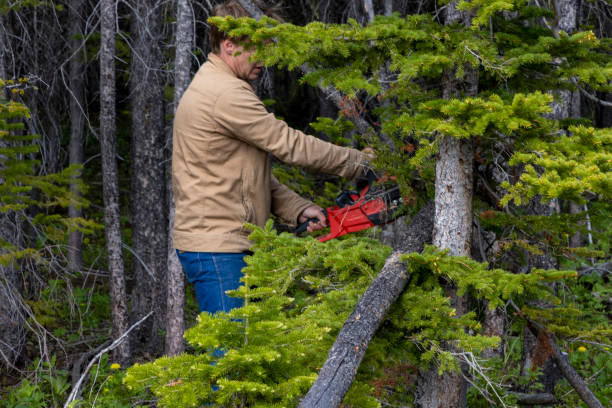There’s more at stake in tree trimming for power line clearance than just maintaining your landscape. You likely know that overgrown branches can lead to power outages and fire hazards, but do you know the crucial safety protocols you should follow? It’s not just about keeping a 10-foot distance from power lines; assuming all lines are live is vital. Hiring professional arborists isn’t just a recommendation—ensuring compliance with local regulations is necessary. But before you pick up the phone, there’s another key step you can’t overlook.
Importance of Tree Trimming
Tree trimming for power line clearance is crucial for several reasons. First, it helps prevent power outages. When tree branches come into contact with power lines, they can cause disruptions that leave you and your neighbors without electricity. Regular trimming minimizes this risk, ensuring a more reliable power supply.
Second, trimming trees near power lines helps reduce the risk of fires. Overgrown branches can easily spark fires, especially during dry seasons. By trimming trees, you’re proactively protecting your property and community from potential fire hazards.
Another reason to trim trees is to maintain the trees’ health. When branches are appropriately pruned, it promotes better growth and helps prevent diseases. Healthy trees are less likely to shed branches that could fall onto power lines, causing damage.
Lastly, trimmed trees improve the overall aesthetics of your neighborhood. Overgrown trees can look unkempt and even block views, while well-maintained trees enhance the beauty of your surroundings.
Safety Protocols to Follow
Adhering to safety protocols is vital when trimming trees near power lines to prevent accidents and ensure everyone’s well-being. First, always assume that all power lines are live. Never touch a tree in contact with power lines, as electricity can travel through the branches. Ensure you always maintain a safe distance—typically at least 10 feet—from power lines.
Use insulated tools designed for electrical safety, but regular gardening tools won’t cut it for this task. Wear protective gear, including gloves, goggles, and a hard hat. It’s also important to inspect your equipment before starting. Faulty gear can lead to severe injuries or worse.
Before you begin, inform your local utility company about your plans. They can offer guidance and temporarily shut off power to ensure your safety. Always have a clear escape route planned in case something goes wrong. Additionally, never work alone. Having someone nearby who can call for help or assist you can be life-saving.
Hiring Professional Services
Considering the complexity and dangers of trimming trees near power lines, hiring professional services is often wise. Professional arborists have the expertise, equipment, and experience to handle the task safely and efficiently. They’re trained to work around high-voltage power lines and know the specific clearance requirements to prevent future issues.
When you’re looking to hire a service, make sure it is certified and insured. Certification ensures the service provider has the necessary training and knowledge, while insurance protects you in case of accidents or damage. Don’t hesitate to ask for references or check online reviews to gauge the service provider’s reputation.
Another critical factor is their familiarity with local regulations. Many areas have specific rules about tree trimming near power lines, and a reputable company will be well-versed in these laws to ensure compliance.
Lastly, get a detailed estimate before any work begins. This should include the scope of work, the timeline, and the total cost. Transparency upfront can help you avoid any surprises. By hiring professionals, you’re investing in the safety and reliability of your power supply and the health of your trees.

